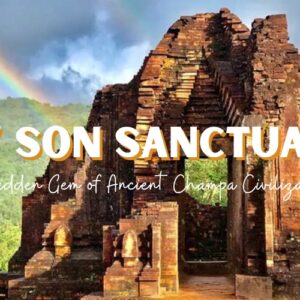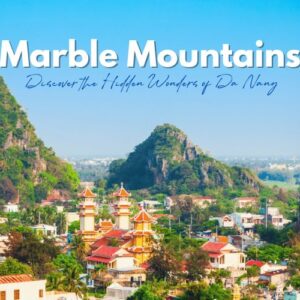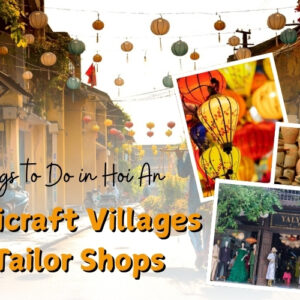
My Son Sanctuary is one of the most important cultural heritages of Vietnam, associated with the ancient Champa culture. This is a place that preserves the historical, religious and architectural values of a civilization that flourished for centuries. Let’s explore the unique historical, architectural and cultural features of this famous relic through the following article.
Overview of My Son Sanctuary
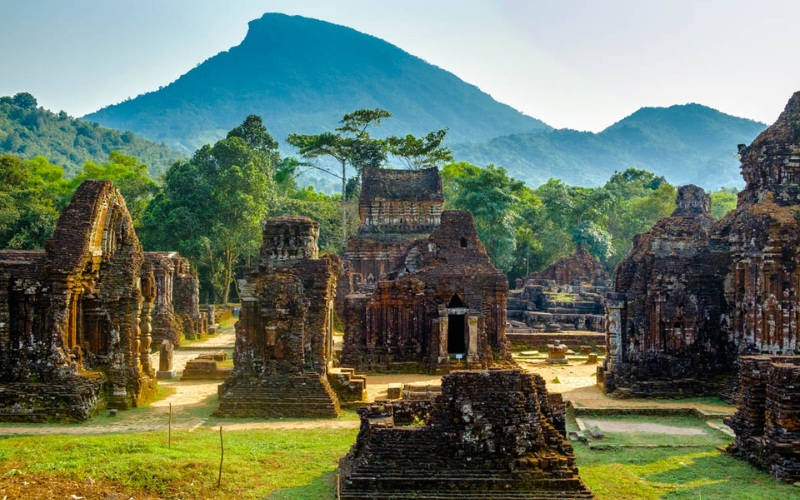
My Son Sanctuary
Address: Duy Phu, Duy Xuyen, Quang Nam. (40km southwest of Hoi An, 70km from Da Nang)
Ticket price:
- Foreigners: 150,000 VND
- Vietnamese: 100,000 VND
- Child under 16 years old: 30,000 VND
Opening hours: 6 AM – 5 PM daily
Built between the fourth and the fourteen centuries in Quang Nam, My Son Sanctuary is an ancient temple complex with strong Hindu elements, honoring Shiva. With more than 70 various temples and towers with many historical architectural traits typical of each growth stage of ancient Champa, this heritage complex has a diameter of almost 2 km. This is an important religious center of the Champa kingdom, where sacred ceremonies are held and where kings and respected religious leaders are buried.
In 1999, UNESCO recognized My Son Sanctuary as a World Heritage Site due in great part to its architectural, historical, and cultural qualities. While conflict and time have destroyed many areas of the relic site, efforts at conservation and restoration help to preserve the worth of this legacy.
History of My Son Sanctuary
Built under King Bhadravarman I in the fourth century, My Son Sanctuary grew over several centuries to show the outstanding evolution of the Champa culture. For the Champa people, My Son Sanctuary is a religious center, where important rituals in spiritual life are performed. Here in the shape of linga and yoni, Shiva-one of the three most significant gods in Hinduism-is revered. The towers, sanctuaries for the royal family and the priestly class of the country, provide the setting for many of the rites honoring Shiva.
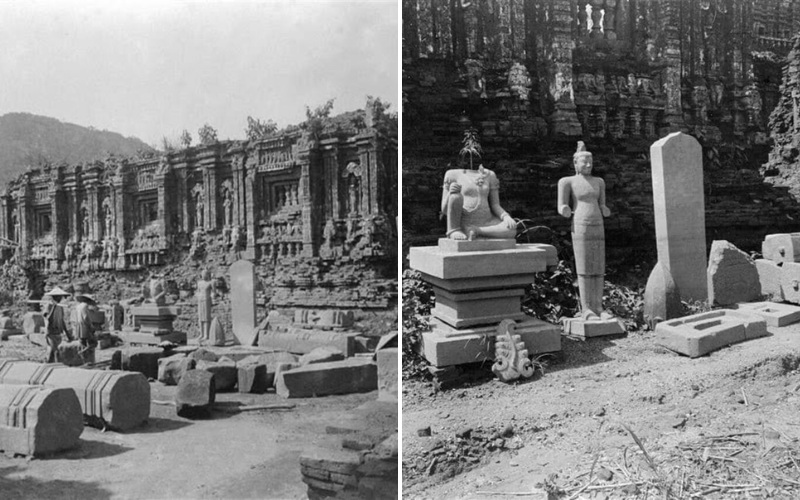
A view of the sanctuary as it was restored in the early 1990s
The temple burned down in the sixth century, first constructed of wood. King Sambhuvarman rebuilt it with bricks in the 7th century, turning it into a unique architectural complex much influenced by Indian religion and society. Over this millennium, the Champa rulers kept expanding the My Son Sanctuary, establishing a complex of more than 70 ancient temples with vestiges of Hindu architecture, especially in regard of Shiva and Linga. Built in a valley over two kilometers in diameter, these buildings provide a magnificent and holy scene surrounded by mountains and hills.
This relic was forgotten until 1898, a Frenchman and his colleagues discovered the relic hidden in the forest, in the heart of the surrounding valley protected by 2 majestic mountains. Despite many historical events and the devastation of war, the sanctuary still retains its mysterious and magical appearance, with 32 structures preserved to this day.
Unique Champa architecture of My Son Sanctuary
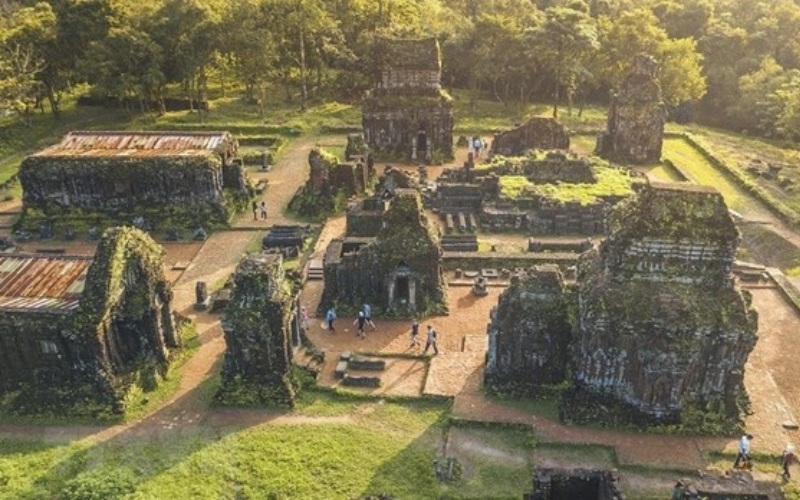
An aerial view of the heritage site
My Son Sanctuary is an architectural masterpiece of the Champa Kingdom with more than 70 temples bearing the Champa art style and the influence of Hinduism. The temples and towers with sophisticated designs and unique patterns have marked the golden age of ancient civilization. In addition, another special impression that makes My Son Sanctuary famous is the mystery of the red brick construction technique. The bricks are baked and cut into blocks, then stacked skillfully without using any adhesives. Over the centuries, My Son Sanctuary has not weathered but only has a very small crack.
The structures face the east – the direction of the rising sun (also the direction of the gods according to Hinduism). Each main tower (Kalan) is designed in a pyramid shape, symbolizing Mount Meru – the center of the universe in Hinduism, and is the place to worship the god Siva in the form of Linga or Siva statue. Around the main tower, there are often auxiliary towers and auxiliary structures, forming a harmonious whole.
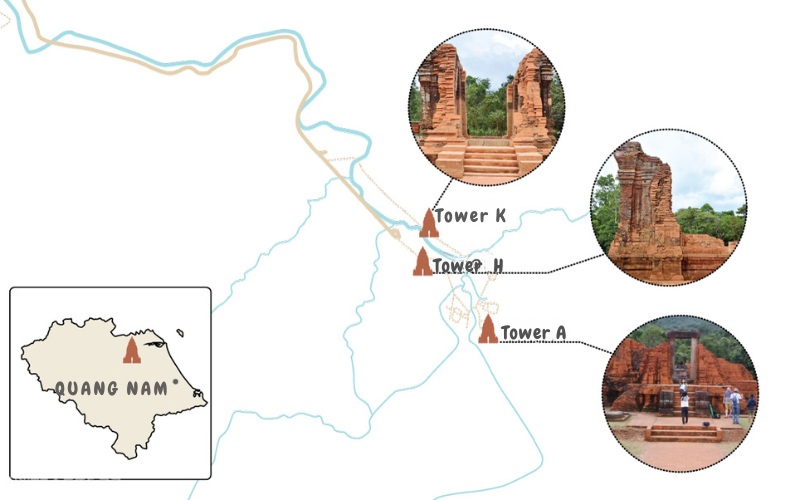
Some of the main towers at My Son Sanctuary
The special thing is that each temple tower in My Son will worship a different king or god, because of this, each structure is considered an important piece through each dynasty of Champa. Some main areas include:
- Area A: This is the first area to visit, where you can see the entire My Son sanctuary, but most of the structures in area A are in the process of restoration. Cluster A stands out with 12 towers, of which Kalan A1 worships Shiva as the center, with sophisticated patterns and perfect symmetrical structure representing the most prosperous period of the country.
- Area B: Located in the western hill area, there is 1 main tower and 3 auxiliary towers. B1 tower is considered the main center of the Sanctuary, with timeless architectural value.
- Area C: Located on the southern hill and is also the most unique area with many temples, towers, reliefs, steles, and extremely impressive works.
> > > To explore My Son Sanctuary in depth and learn more about its Champa architecture, a full-day tour from Hoi An is a convenient and informative option. Check out our detailed itinerary here.
Outstanding highlights in My Son Sanctuary
Visit and explore the relics
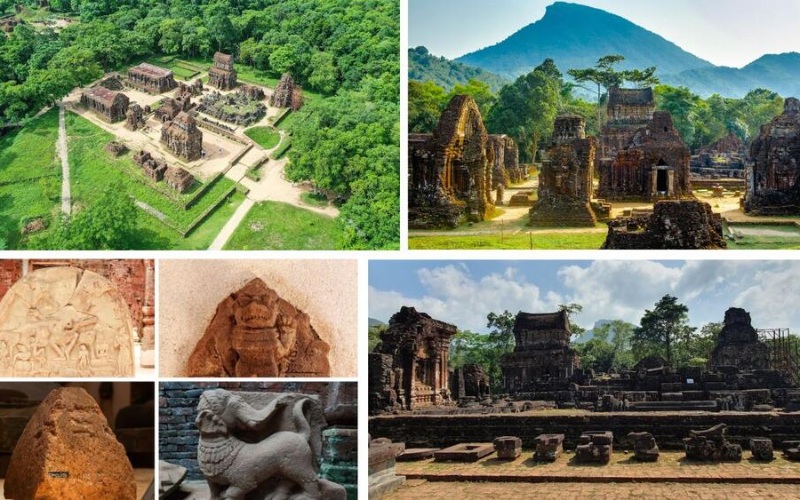
My Son Sanctuary is famous for its unique and intricate Cham architecture
Although it is a cultural relic preserved by the country, My Son Sanctuary is still open to welcome visitors from all over the world to visit. This is an opportunity to admire and learn about the unique cultural features of the ancient Cham people. With 32 intact temple towers, My Son Sanctuary is still enough to amaze any visitor with its ingenuity and sophisticated construction techniques.
In addition to the unique construction method, each structure at My Son also impresses with its intricately carved patterns and reliefs on the surface of the bricks, such as images of gods, lotus flowers, and complex geometric patterns. This is a great opportunity to take souvenir photos among the majestic temples and towers, preserving memorable moments in the legendary cultural space.
Walk on the ancient road
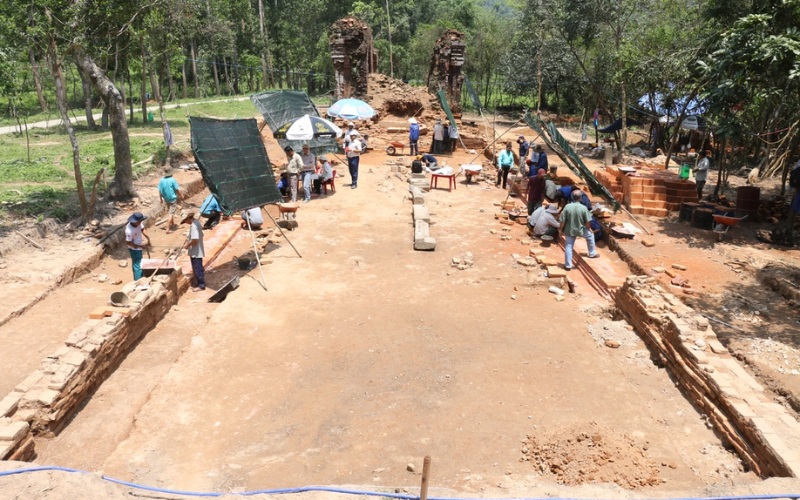
The mysterious ancient road unearthed and preserved through dedicated efforts
One of the special highlights of My Son Sanctuary is the 8m wide ancient road with 2 parallel walls 1m deep buried in the ground. According to historical documents, this road will lead to the center of the sanctuary, where there is a large gate tower used for worship only for kings, royalty, and dignitaries. At the end of the road, visitors will find a large gate tower, which is considered the most sacred space in the entire My Son temple complex.
The wall system on both sides of the road is delicately and skillfully carved. Walking on this road, visitors will feel like going back in time, entering the world of thousands of years ago, where the Cham people once set their first steps to the sacred temples.
Enjoy the enchanting Apsara dance
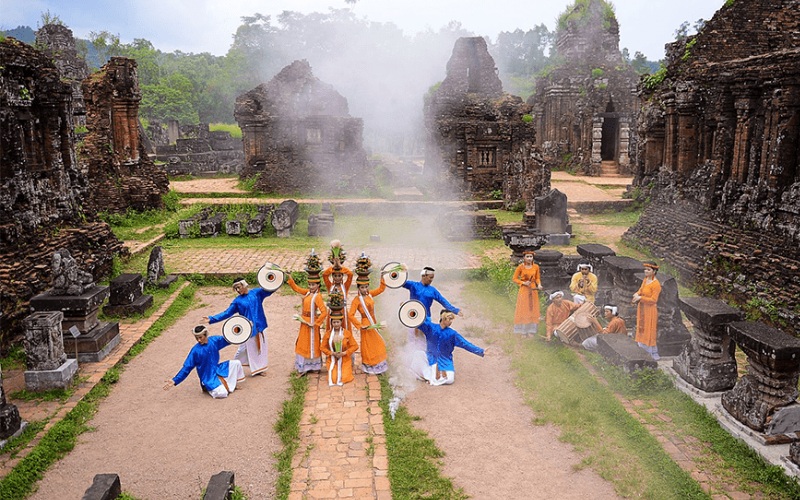
An Apsara dance performance at the ruins
Apsara dance is a traditional dance of the Cham people, often performed daily at My Son Sanctuary. This dance recreates the image of Apsara fairies in Hindu mythology, expressing respect for the gods. Performed by beautiful Cham dancers, combined with the sound of Paranung drums and Saranai flutes, this performance will bring visitors back to the ancient Cham cultural space.
Usually scheduled everyday at the relic site, Apsara dance presentations feature shows at 9:15, 10:45, 14:00, and 15:30. Visitors should plan their trip such that they do not miss the chance to appreciate this special cultural asset.
Participate in the traditional Kate festival of the Cham people
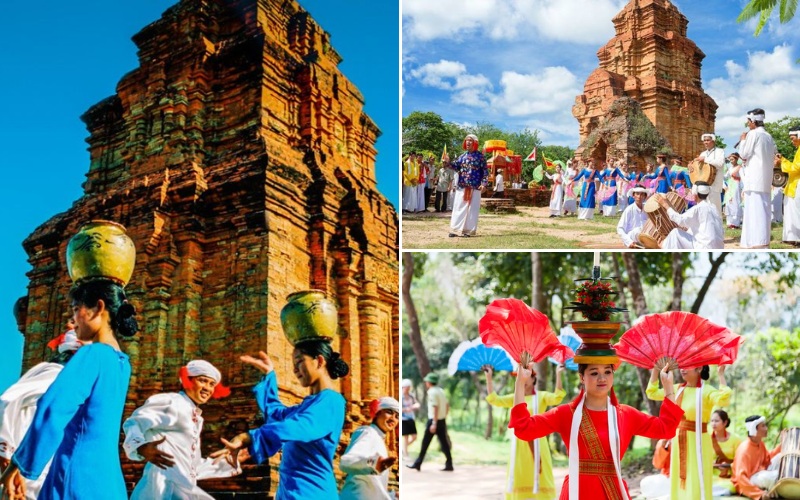
The Kate festival of Cham people held at the sanctuary
Kate Festival is one of the most important and unique religious festivals of the Cham people, usually taking place in July every year according to the Cham calendar. The festival is not only a religious ceremony but also an opportunity for the Cham people to express their traditional beauty through rituals, music and typical dances. If your travel schedule coincides with the Kate Festival, you will be able to immerse yourself in the rituals of praying for peace, carrying palanquins in ceremonial costumes and Kate, carrying water… The festival also has many unique performances combined with traditional props and graceful dances of the artists that will make it difficult for you to take your eyes off.
Experience the unique cuisine of the area

Some must-try dishes in Quang Nam
Regarding cuisine, visitors to Quang Nam in general and My Son Sanctuary in particular can choose specialties here such as Quang noodles, Cao Lau, pork rice paper, dried rice paper, etc. On the way, you can enjoy Cau Mong grilled veal, chicken noodles or Phu Chiem noodles nearby. Each has a different taste, thus, from the first experience, tourists will be enthralled.
> > > After discovering the historic beauties of My Son Sanctuary, why not start your cultural adventure with Hoi An tours around the enchanted town just a short drive away?
What to note when visiting the relics
Here are some practical tips to help you have the best experience when visiting My Son Sanctuary:
- Quang Nam weather has 2 seasons: rainy season (September to December) and dry season (February to August). If you are wondering when the best time to visit My Son Sanctuary is, consider choosing the dry season to fully enjoy the ancient beauty and interesting experiences at My Son Sanctuary. At this time, the weather will be quite cool and not too sunny, you should still bring an umbrella, a light jacket and sunscreen.
- Visit early in the morning or late in the afternoon to avoid the heat and crowds of tourists. You will have more time to explore the private and quieter relic site. In particular, the scenery of the sanctuary in the early morning and sunset becomes even more magical and mysterious.
- With a convenient location, My Son Sanctuary is only about 40 minutes from Hoi An ancient town and about 1 hour from Da Nang. Combine them into a day trip to experience and understand more about the culture of central Vietnam.
- This is a cultural tourism area, hence you should dress modestly and politely. In addition, most of the relics are outdoors, so bring an umbrella, hat or light jacket. Don’t forget to choose a pair of comfortable shoes because you will need to walk quite a lot.
- You can freely take pictures here but do not touch the statues or reliefs, do not climb because those things can damage the ruins.
- Hiring a tour guide will help enhance your trip. The relics are rich in Cham history and Hindu symbolism, but they can be quite confusing for first-time visitors. The guides will provide you with useful information and the meaning behind the sculptures and architecture of the sanctuary
If you have planned a trip to Da Nang, Hoi An, don’t forget to spend time exploring My Son Sanctuary. With ancient towers, sophisticated Cham architecture and peaceful natural space, this will be an ideal place for anyone who loves history, especially want to learn about ancient Cham culture. Contact us today to plan the perfect visit to My Son Sanctuary and discover the hidden stories of the Champa civilization.
Read more:
